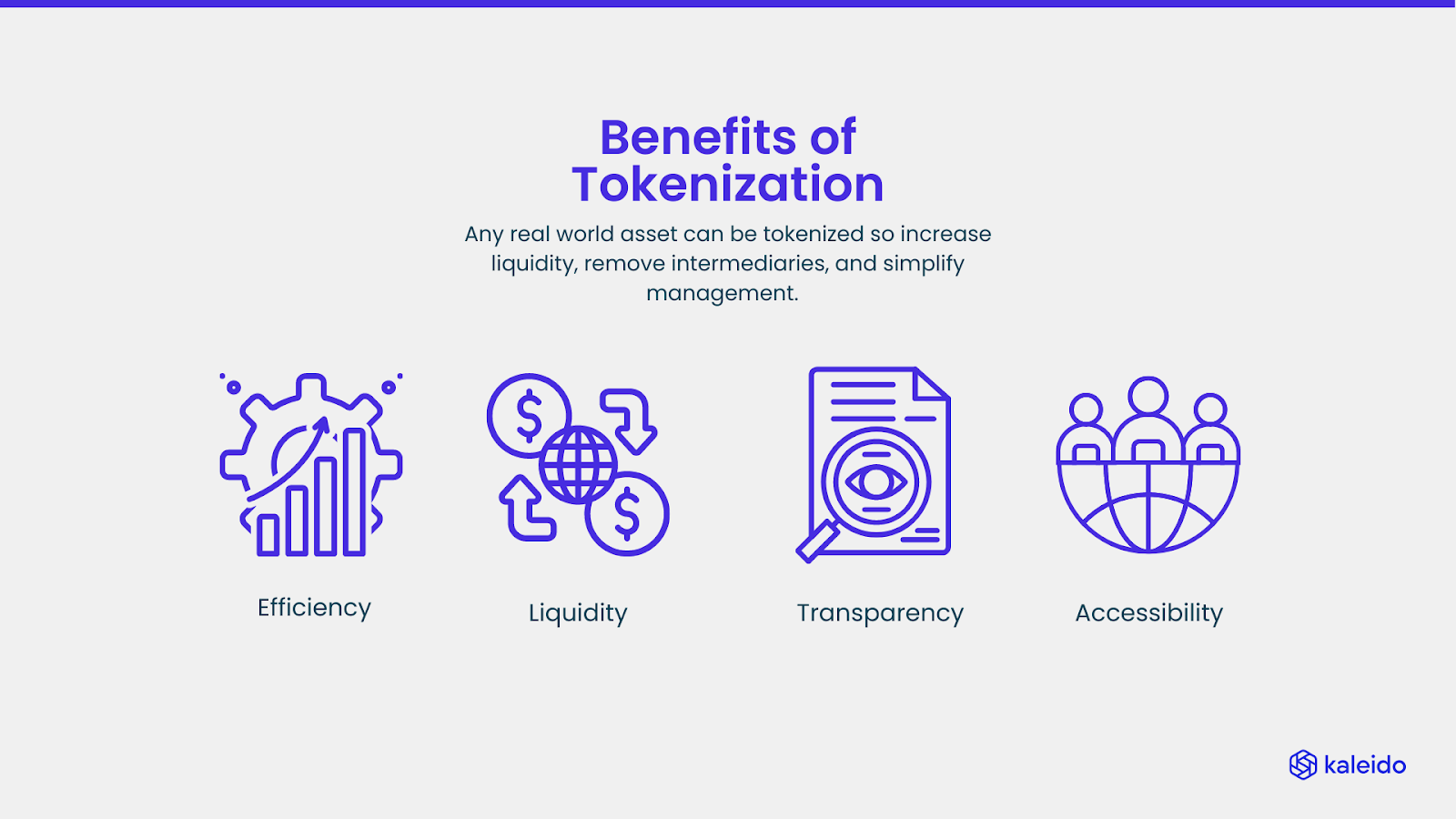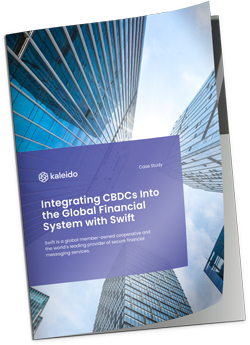

The world of real estate is undergoing a revolutionary transformation through asset tokenization, a process that leverages blockchain technology to represent ownership of physical properties with digital tokens. Tokenization may make it easier for institutions to manage a large number of properties, removing intermediaries, lawyers, and site managers from various processes.
In this blog, we will explore the opportunities, challenges, and the process a bank may undertake to tokenize a real estate asset, all to shed light on why this emerging trend is gaining traction with financial institutions.
Tokenization of real estate offers investors a game-changing advantage by making it easier to convert their holdings into sellable shares without the need for intermediaries. This enhanced liquidity streamlines the investment process, allowing investors to access their funds when needed.
Digital tokens provide real-time information about the performance of real estate assets. This transparency transforms real estate from a static asset to a dynamic one, facilitating more active portfolio management. With access to real-time data, investors can make informed decisions swiftly.
Tokenization enables fractional ownership, a concept that holds immense potential for democratizing real estate investment. Investors can now crowdfund for property purchases or sell shares in a holding, transforming stagnant assets into dynamic investment opportunities.
One of the most exciting aspects of real estate tokenization is the potential it holds for global investment opportunities. Retail investors can now explore real estate markets across borders, diversifying their portfolios in previously inaccessible markets.

The legal framework surrounding the tokenization of real estate is still evolving. Regulators are yet to establish clear guidelines for these digital assets. Investors and developers need to navigate this uncertain landscape, ensuring compliance with emerging regulations.
Blockchain technology, while promising, presents its own set of challenges. Issues related to scalability, interoperability, and asset custody need to be addressed. Kaleido, a blockchain platform, offers solutions to many of these technical challenges, making it easier to get solutions live and manage assets at scale.
Tokenized real estate is still a new concept, and traditional investors may be hesitant to embrace it. Many individuals remain unfamiliar with blockchain technology and have concerns about tracking and proving ownership. Education and awareness initiatives are essential to overcome these hurdles.
Investors should be aware that owning a tokenized share of a property also comes with shared costs, including maintenance, taxes, and other associated fees. These additional costs can impact the overall returns on the investment.

Banks are looking to tokenize real estate assets as a way to unlock new opportunities for investment. Through fractional ownership, reduced transaction costs, and increased auditability, banks can leverage blockchain technology to create more efficient and accessible markets for investment.
But how do we turn a physical asset like a house or plot of land into a token?
Tokenization of real estate involves creating digital tokens that represent ownership of an asset. Here we’re going to outline the steps you might take to digitize a house or building, assuming this will change and adapt to meet your existing flows.
Banks should start with an evaluation of their portfolio to determine if it’s suitable for tokenization. This includes analyzing factors such as location, market demand, potential revenue streams, and legal implications. Financial institutions also want to be sure they choose a partner who can help them build a secure platform for easily managing digital holdings. This means choosing a platform like Kaleido that integrates well with legacy systems and empowers teams to work smarter—not harder.
Most banks will need to ensure that the tokenization process complies with all relevant laws and regulations, such as securities laws and anti-money laundering regulations. As blockchain solutions come online, it’s important to keep up with who is buying shares of a holding and the source of money in the system.
Banks should identify the various stakeholders involved in the tokenization process, including the property owner, investors, and any other parties such as legal advisors, auditors, and regulators. A blockchain solution should allow you to set rules for who has access to what, transaction processes, and any legal or privacy constraints.
Next, determine the ownership structure of the real estate asset and the percentage of ownership that will be represented by each token. For example, a piece of property worth $250,000 may be composed of 1,000 tokens worth $250 or ten tokens worth $25,000. Efforts to fractionalize an asset should align with a pool of willing investors.
A platform like Kaleido’s, can help you create digital tokens and assign them to the respective owners. With clear transaction rules, auditable trails, and real-time insights into the value of holdings, portfolio participants can monitor sales, valuation, and activity from a user-friendly console. You can read more in this tutorial about how to tokenize an asset.
The bank can then issue the tokens to the investors, who will now own a fractional share of the real estate asset. Token holders can receive updates on the value of their holding, much as they would the purchase of a stock. Keep in mind rules around knowing customers as you issue your tokens.
With a pool of tokens to sell or with a digital portfolio, banks can establish a secondary market where investors can buy and sell their tokens. This is an interesting construct for financial institutions as they build into token royalties to be paid on future sales.
The bank will manage the real estate asset, collecting rent, paying expenses, and distributing profits to the token holders. Many of these functions can be programmed on top of the tokenized asset, so management is largely automated.
The future of tokenized real estate is promising, with the potential to revolutionize the way people invest in and trade real estate. One of the main advantages of tokenized real estate is increased liquidity. Since the tokens can be bought and sold on a digital marketplace, investors can easily trade their ownership stake without the need for traditional intermediaries like real estate agents or banks. This also allows investors to buy a smaller stake in a property, making real estate investment more accessible to a wider range of people.
In the future, we expect to see more real estate assets being tokenized, including residential and commercial properties, as well as real estate funds and REITs. Just keep in mind, there are also regulatory and legal challenges that need to be addressed to ensure that tokenization is done in a compliant and transparent way.
To get started, you need to partner with a digital asset platform that is building toward an interoperable future and has experience with institutional scale. If you have an asset you want to turn into a token, start with a conversation with one of our solutions architects.
Demo the Kaleido Asset Platform to see how we've simplified the tokenization of real-world assets at scale.
Request a DemoDemo the Kaleido Asset Platform to see how we've simplified the tokenization of real-world assets at scale.
Request a Demo


Demo the Kaleido Asset Platform to see how we've simplified the tokenization of real-world assets at scale.
Request a DemoDemo the Kaleido Asset Platform to see how we've simplified the tokenization of real-world assets at scale.
Request a Demo
Your guide to everything from asset tokenization to zero knowledge proofs
Download Now
Learn how Swift, the world’s leading provider of secure financial messaging services, utilizes Kaleido in its CBDC Sandbox project.
Download Now

